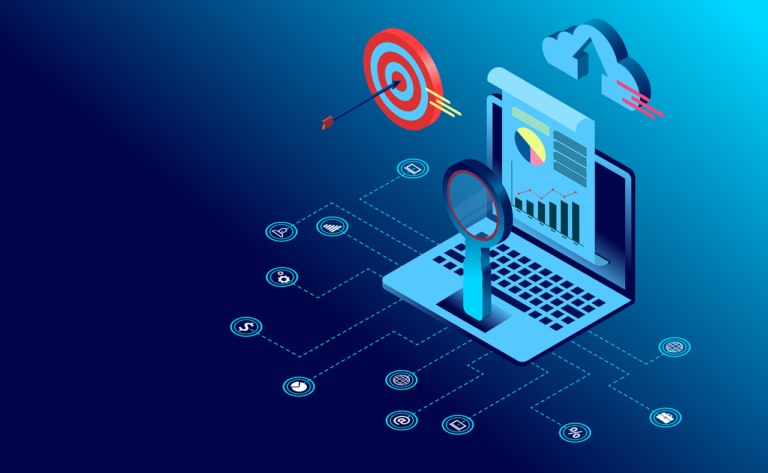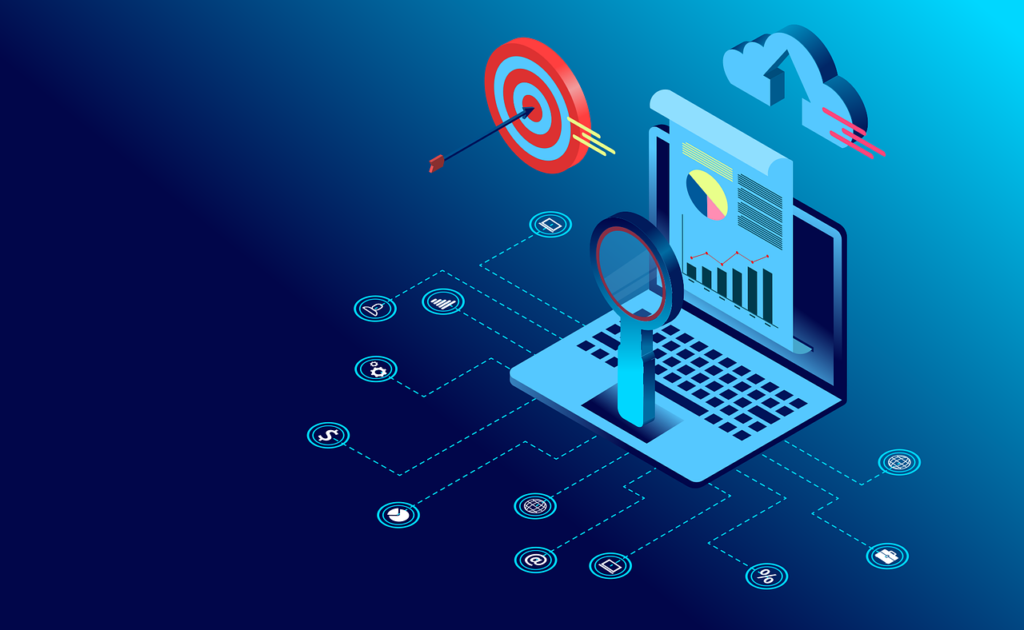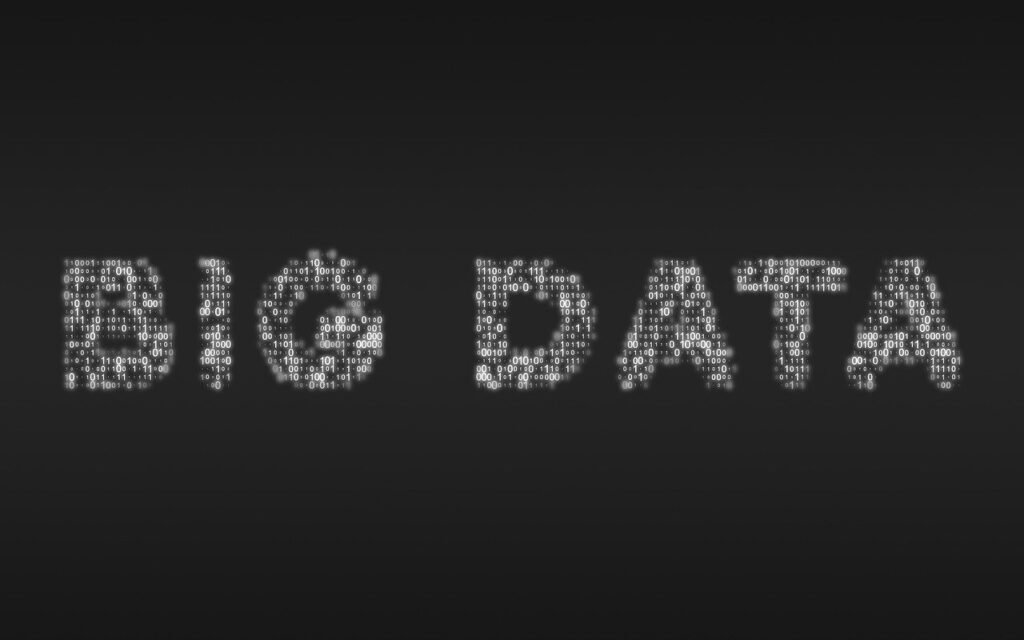
Learn the required skills
Data science is the field of extracting valuable insights from raw data, which can be used in business decision-making. To do that, a data scientist needs to have a wide range of technical skills, including statistics, machine learning, natural language processing, and the rapidly growing field of Gen AI.
Overwhelmed by that list of requirements? Don’t worry! Just like any other field, you can pick these skills up as you go along, and some are more critical than others. To that end, here is a list of seven key skills you should focus on as an entry-level data scientist.
What Is a Data Scientist?
A data scientist is a professional who collects, analyzes, and interprets vast amounts of data to help organizations make informed decisions. They combine programming, mathematics, and domain expertise to extract actionable insights. Whether it’s building predictive models, developing algorithms, or visualizing trends, data scientists are problem-solvers who leverage data to answer critical business questions.
Why Become a Data Scientist?
- High Demand: Companies across industries are hungry for data-driven insights, creating a massive demand for data science professionals.
- Attractive Compensation: Data scientists enjoy lucrative salaries and benefits. In the U.S., the median annual salary for a data scientist is over $120,000.
- Diverse Opportunities: From healthcare to finance, e-commerce to gaming, data scientists can work in virtually any field.
- Intellectual Satisfaction: Solving real-world problems with data is intellectually stimulating and fulfilling.

Key Skills and Tools for Data Scientists
1. Programming Languages
1. Python
Why Python?
Python is the undisputed leader in the data science ecosystem, favored for its simplicity, versatility, and extensive libraries. It is beginner-friendly yet powerful enough to handle complex computations, making it the go-to language for both aspiring and experienced data scientists.
Key Libraries and Their Applications:
- Pandas: Data manipulation and analysis.
- NumPy: Numerical computing and handling large datasets.
- Matplotlib/Seaborn: Data visualization and plotting.
- Scikit-learn: Machine learning and predictive modeling.
- TensorFlow/PyTorch: Deep learning frameworks for advanced AI tasks.
When to Use Python:
- Exploratory data analysis (EDA).
- Building and deploying machine learning models.
- Automating workflows and data pipelines.
2. R
Why R?
R was designed specifically for statistical analysis and visualization, making it a top choice for tasks requiring rigorous statistical modeling. It is widely used in academic research and industries where statistical methods are critical.
Key Libraries and Their Applications:
- dplyr: Data manipulation.
- ggplot2: Advanced data visualization.
- caret: Machine learning and model training.
- Shiny: Building interactive web apps for data presentation.
When to Use R:
- Performing statistical tests and hypothesis analysis.
- Creating high-quality, customizable visualizations.
- Academic research and bioinformatics.
3. SQL
Why SQL?
SQL (Structured Query Language) is essential for working with relational databases. Most data in organizations resides in databases, and data scientists frequently use SQL to extract, filter, and transform this data before analysis.
Key Applications:
- Querying structured datasets.
- Performing aggregations, joins, and data filtering.
- Data preparation for further analysis in Python or R.
When to Use SQL:
- Interacting with large databases efficiently.
- Cleaning and organizing data for analytics.
- Performing initial exploratory queries on datasets.
4. Scala
Why Scala?
Scala is known for its performance and scalability, making it a preferred language for big data processing. It is often used with tools like Apache Spark to process massive datasets quickly.
Key Applications:
- Working with big data frameworks like Apache Spark.
- Streaming real-time data for analytics.
- Building scalable data pipelines.
When to Use Scala:
- Handling datasets too large for Python or R.
- Real-time data processing and analysis.
5. Julia
Why Julia?
Julia is a newer programming language designed for numerical and scientific computing. It combines the ease of Python with the performance of low-level languages like C++, making it ideal for high-performance data analysis tasks.
Key Libraries and Their Applications:
- DataFrames.jl: Data manipulation and analysis.
- Plots.jl: Data visualization.
- Flux.jl: Machine learning.
When to Use Julia:
- Tasks requiring both high speed and ease of coding.
- Numerical simulations and algorithm-heavy computations.
6. JavaScript
Why JavaScript?
While not traditionally associated with data science, JavaScript is becoming increasingly relevant for creating dynamic data visualizations and interactive dashboards. Libraries like D3.js make it a valuable skill for data scientists focused on front-end presentation.
Key Libraries and Their Applications:
- D3.js: Creating dynamic, interactive visualizations.
- Plotly.js: Interactive plots and charts.
When to Use JavaScript:
- Building web-based data visualization dashboards.
- Enhancing the user experience of data-driven apps.
2. Mathematics and Statistics
- Proficiency in linear algebra, calculus, and probability is crucial.
- Strong grasp of statistical methods to understand distributions, correlations, and hypothesis testing.
1. Linear Algebra
Linear algebra is the study of vectors, matrices, and linear transformations. It’s a core component of data science, especially in machine learning and data manipulation.
Key Concepts:
- Vectors and Matrices: Representing data in structured forms.
- Matrix Operations: Addition, multiplication, inversion, and transposition.
- Eigenvalues and Eigenvectors: Used in dimensionality reduction techniques like PCA (Principal Component Analysis).
- Dot Products: Measure similarity between vectors, critical for algorithms like cosine similarity.
Applications:
- Data representation in machine learning models.
- Implementing transformations in image and signal processing.
- Reducing data dimensions to improve computational efficiency.
2. Calculus
Calculus, particularly differential and integral calculus, is essential for understanding and optimizing machine learning algorithms.
Key Concepts:
- Derivatives: Measure changes and find minima or maxima of functions.
- Gradients: Used in optimization algorithms like gradient descent.
- Partial Derivatives: Involve functions with multiple variables, critical in neural networks.
- Integrals: Calculate areas under curves, probabilities, and expectations.
Applications:
- Optimizing machine learning models.
- Training neural networks through backpropagation.
- Understanding the relationship between variables and outcomes.

3. Probability Theory
Probability is the backbone of statistical inference and predictive modeling. It quantifies uncertainty and helps in understanding data distributions.
Key Concepts:
- Random Variables: Represent outcomes of random phenomena.
- Probability Distributions: Describe the likelihood of outcomes (e.g., normal, binomial, Poisson distributions).
- Bayes’ Theorem: Foundation for Bayesian statistics and many machine learning algorithms.
- Expected Value and Variance: Measure central tendencies and variability in data.
Applications:
- Building probabilistic models like Naïve Bayes classifiers.
- A/B testing for decision-making.
- Risk assessment and forecasting.
4. Statistics
Statistics is crucial for understanding and interpreting data. It allows data scientists to make inferences, test hypotheses, and uncover relationships in data.
Descriptive Statistics
Summarize and describe the main features of a dataset.
- Measures of Central Tendency: Mean, median, mode.
- Measures of Dispersion: Variance, standard deviation, range.
- Skewness and Kurtosis: Understand the shape of data distributions.
Inferential Statistics
Draw conclusions about a population based on a sample.
- Hypothesis Testing: Assessing claims using tests like t-tests, chi-square tests, or ANOVA.
- Confidence Intervals: Estimating population parameters with a range of values.
- Regression Analysis: Identifying relationships between variables (e.g., linear regression, logistic regression).
Applications:
- Understanding data distributions and anomalies.
- Testing the significance of findings.
- Building and evaluating predictive models.
3. Data Manipulation and Cleaning
- Why Data Manipulation and Cleaning Are Crucial
Improved Model Accuracy: Clean, well-structured data reduces noise, leading to better model performance.
Reliable Insights: Poor data quality can result in misleading conclusions and incorrect business decisions.
Efficient Workflow: Organized data simplifies the analysis process, saving time and resources.
Scalability: Clean data ensures reproducibility, enabling easier updates and scaling of projects.
Common Data Manipulation Tasks
Filtering:
Extract subsets of data based on conditions.
Example: Filtering users above a certain age or transactions within a specific date range.
Grouping and Aggregating:
Summarize data by groups, such as calculating averages or sums.
Example: Finding average monthly sales per region.
Merging Datasets:
Combine data from multiple sources for a comprehensive analysis.
Example: Merging customer data with transactional records.
Reshaping Data:
Change data structures (e.g., wide-to-long format).
Example: Unpivoting sales data to show daily transactions instead of summary totals.
Feature Engineering:
Create new variables from raw data to enhance model accuracy.
Example: Deriving “age” from a “birth_date” column.
Common Data Cleaning Tasks
Handling Missing Data:
Removal: Drop rows or columns with too many missing values.
Imputation: Fill gaps using statistical methods (e.g., mean, median, mode) or advanced techniques like KNN imputation.
Removing Duplicates:
Identify and remove duplicate entries to prevent biased analysis.
Correcting Data Types:
Ensure all variables have the correct format (e.g., dates, integers, floats).
Addressing Outliers:
Use techniques like the Interquartile Range (IQR) or Z-scores to identify and handle anomalies.
Standardizing Data:
Normalize text fields (e.g., “NY” → “New York”) and numerical ranges (e.g., scale data between 0 and 1).
Encoding Categorical Variables:
Convert text categories into numerical representations for machine learning models..
4. Machine Learning
- Machine learning is a subset of artificial intelligence (AI) that focuses on algorithms that allow computers to learn and improve from experience without being explicitly programmed. It uses data to train models, which can then make predictions or decisions.
- Understanding supervised and unsupervised learning, model evaluation, and tuning.
- Familiarity with frameworks like TensorFlow, PyTorch, or XGBoost.
Key Types of Machine Learning
- Supervised Learning:
- Definition: The model learns from labeled data to make predictions.
- Examples:
- Regression: Predicting continuous values (e.g., house prices).
- Classification: Assigning labels to inputs (e.g., spam vs. non-spam emails).
- Unsupervised Learning:
- Definition: The model identifies patterns and relationships in unlabeled data.
- Examples:
- Clustering: Grouping similar items (e.g., customer segmentation).
- Dimensionality Reduction: Reducing data features while retaining important information (e.g., PCA).
- Semi-Supervised Learning:
- Definition: Combines labeled and unlabeled data to improve model performance.
- Examples: Labeling a few images in a dataset and training a model to classify all.
- Reinforcement Learning:
- Definition: The model learns by interacting with an environment and receiving feedback in the form of rewards or penalties.
- Examples:
- Training autonomous vehicles.
- Game-playing agents like AlphaGo.
Steps in the Machine Learning Workflow
- Problem Definition:
- Identify the business problem and define the objectives.
- Data Collection:
- Gather relevant and diverse datasets.
- Data Preparation:
- Perform data cleaning, manipulation, and transformation.
- Feature Engineering:
- Create, select, and transform features to improve model performance.
- Model Selection:
- Choose an algorithm suitable for the problem (e.g., linear regression, decision trees, neural networks).
- Model Training:
- Train the model on a subset of the data.
- Evaluation:
- Assess model performance using metrics like accuracy, precision, recall, or RMSE.
- Tuning:
- Optimize hyperparameters and features to enhance performance.
- Deployment:
- Implement the model in a production environment.
- Monitoring and Maintenance:
- Continuously monitor model performance and update as necessary.
Key Algorithms in Machine Learning
Supervised Learning Algorithms
- Linear Regression: Predicts continuous outcomes based on input features.
- Logistic Regression: Used for binary classification problems.
- Decision Trees: Builds tree-like models for decision-making.
- Random Forests: An ensemble of decision trees to improve performance.
- Support Vector Machines (SVM): Finds the optimal boundary between classes.
- Neural Networks: Mimics the human brain for complex data representations.
Unsupervised Learning Algorithms
- K-Means Clustering: Groups data points into clusters based on similarity.
- Hierarchical Clustering: Creates a tree of clusters for hierarchical relationships.
- Principal Component Analysis (PCA): Reduces dimensionality by identifying key components.
Reinforcement Learning
- Q-Learning: A value-based approach for decision-making.
- Deep Q-Networks (DQN): Combines Q-learning with deep learning for complex problems.
5. Data Visualization
Data visualization is the art and science of presenting data in a visual format that makes it easier to understand trends, outliers, and patterns. For data scientists, visualization is not just a final step but an integral part of the entire data science pipeline, from exploratory data analysis (EDA) to presenting findings to stakeholders.
- Tools like Tableau, Power BI, and Matplotlib to present data insights compellingly.
- A good story backed by visuals can be as powerful as the analysis itself.
Importance of Data Visualization in Data Science
- Enhanced Understanding: Visualizations make complex data more interpretable.
- Pattern Discovery: Charts and graphs can reveal hidden trends and relationships.
- Effective Communication: Simplifies sharing insights with non-technical stakeholders.
- Faster Decision-Making: Visual data speeds up interpretation, enabling quicker actions.
- Validation of Results: Helps verify the accuracy of models and data processing.

Key Types of Data Visualizations
Basic Charts and Graphs
- Line Chart:
- Best for showing trends over time (e.g., sales growth).
- Bar Chart:
- Useful for comparing categories or groups (e.g., revenue by region).
- Pie Chart:
- Displays proportions but should be used sparingly due to interpretability issues.
- Histogram:
- Shows the distribution of a single variable (e.g., customer ages).
Advanced Visualizations
- Scatter Plot:
- Reveals relationships or correlations between two variables (e.g., income vs. spending).
- Box Plot:
- Highlights data distribution and outliers (e.g., salaries by department).
- Heatmap:
- Visualizes data intensity or correlation matrices.
- Treemap:
- Shows hierarchical data using nested rectangles.
- Geospatial Maps:
- Visualizes location-based data (e.g., sales by country).
Interactive Dashboards
- Tools like Tableau and Power BI enable the creation of dynamic dashboards for real-time data exploration.
6. Big Data Tools
Why Are Big Data Tools Important for Data Scientists?
- Scalability: Handle massive datasets that grow rapidly in volume, velocity, and variety.
- Efficiency: Optimize data storage, retrieval, and processing to save time and resources.
- Real-Time Insights: Process streaming data for immediate analysis and decision-making.
- Diverse Data Types: Manage structured, semi-structured, and unstructured data.
- Collaboration: Integrate with machine learning frameworks, visualization tools, and cloud platforms.
Categories of Big Data Tools
1. Data Storage and Management
- Manage and store massive datasets efficiently.
Popular Tools:
- Hadoop Distributed File System (HDFS):
- Distributed storage system for handling large datasets.
- Features: Fault-tolerant, scalable, and open-source.
- Amazon S3:
- Cloud-based object storage service.
- Features: Durable, scalable, and integrates with AWS ecosystem.
- Google BigQuery:
- Serverless data warehouse for large-scale queries.
- Features: Fast SQL queries, integration with Google Cloud.
- Apache Cassandra:
- Distributed NoSQL database designed for high availability.
- Features: Handles structured and semi-structured data.
- MongoDB:
- Document-based NoSQL database for flexibility.
- Features: Schema-less, suitable for unstructured data.
2. Data Processing and Analysis
- Process large datasets efficiently for analysis and modeling.
Popular Tools:
- Apache Spark:
- Unified analytics engine for large-scale data processing.
- Features: In-memory processing, supports batch and streaming data.
- Apache Hadoop (MapReduce):
- Framework for processing large datasets across distributed systems.
- Features: Batch processing, scalable.
- Presto:
- SQL query engine for interactive data analysis.
- Features: Works on data lakes, supports multiple data sources.
- Dask:
- Python-based parallel computing framework for big data.
- Features: Compatible with Pandas, NumPy, and Scikit-learn.
- Snowflake:
- Cloud-based data warehouse for big data analytics.
- Features: High concurrency, integrates with BI tools.
3. Data Streaming
Experience with platforms like Hadoop, Spark, and AWS for handling large-scale data is a plus.
- Handle real-time data pipelines and streaming analytics.
Popular Tools:
- Apache Kafka:
- Distributed event streaming platform.
- Features: Real-time processing, scalable.
- Apache Flink:
- Stream processing framework for real-time analytics.
- Features: Low-latency, fault-tolerant.
- Apache Storm:
- Distributed real-time computation system.
- Features: Handles continuous data streams.
- Google Dataflow:
- Cloud-based tool for batch and stream processing.
- Features: Fully managed, integrates with Google Cloud.

Pathways to Becoming a Data Scientist
1. Formal Education
- A degree in computer science, statistics, mathematics, or related fields is advantageous.
- Specialized master’s programs or certifications in data science provide targeted knowledge.
2. Online Learning Platforms
- Platforms like Coursera, edX, and Udemy offer affordable courses on data science, machine learning, and AI.
3. Projects and Portfolios
- Create a portfolio showcasing your projects, such as predictive models, sentiment analysis, or dashboards.
- Use platforms like GitHub to share your code and Kaggle to participate in competitions.
4. Internships and Freelance Work
- Gain hands-on experience through internships, freelance projects, or volunteering.
- Practical experience can often outweigh theoretical knowledge.
5. Networking and Community Engagement
- Attend data science meetups, webinars, and conferences.
- Engage with the community on LinkedIn or forums like Reddit’s r/datascience.
The Job Search
1. Tailoring Your Resume
Highlight relevant skills, tools, and projects. Quantify your achievements, such as “improved model accuracy by 15%.”
2. Building a Strong LinkedIn Profile
Showcase your portfolio, certifications, and participation in hackathons or competitions.
3. Preparing for Interviews
Be ready for technical interviews involving case studies, coding challenges, and business problem-solving. Resources like LeetCode and DataCamp can help you prepare.
4. Applying Strategically
- Target companies that value data-driven decision-making.
- Apply to roles like junior data analyst, machine learning engineer, or data scientist intern to gain a foothold.
Staying Ahead in the Field
The tech industry evolves rapidly. To remain competitive:
- Continuously update your skills and learn emerging tools.
- Follow industry leaders and trends through blogs, podcasts, and journals.
- Experiment with real-world datasets available on Kaggle, UCI Machine Learning Repository, or government portals.
Challenges in Becoming a Data Scientist
- Overwhelming Skill Set: It’s easy to feel daunted by the breadth of skills required. Start small, focusing on one area at a time.
- Imposter Syndrome: Many beginners feel they don’t belong. Remember, every expert was once a beginner.
- Job Market Competition: Stand out with a strong portfolio and by showcasing your problem-solving skills.
1. Skill Gaps
- Diverse Skill Set: Data science requires proficiency in programming, mathematics, statistics, data visualization, and machine learning. Building expertise across such a broad spectrum can be overwhelming.
- Rapid Evolution: New tools and techniques emerge frequently, requiring constant upskilling.
How to Overcome:
- Focus on one area at a time (e.g., programming first, then machine learning).
- Use structured online courses, bootcamps, and certifications to guide your learning.
2. Lack of Hands-On Experience
- Problem: Theoretical knowledge is not enough; practical experience with real-world datasets and challenges is crucial.
- Challenge: Many entry-level aspirants lack opportunities to work on substantial projects.
How to Overcome:
- Engage in personal projects and participate in hackathons or Kaggle competitions.
- Work on open-source projects or contribute to collaborative platforms.
- Seek internships or freelance opportunities.
3. Imposter Syndrome
- Problem: The vastness of the field often makes aspirants doubt their abilities, especially when comparing themselves to experienced professionals.
- Challenge: Feeling inadequate can lead to discouragement or a lack of confidence.
How to Overcome:
- Acknowledge that no one knows everything in data science.
- Celebrate small wins and focus on consistent learning.
- Seek mentorship or join communities for support and guidance.
4. Difficulty in Learning Mathematics and Statistics
- Problem: Many find advanced topics like linear algebra, calculus, and probability daunting.
- Challenge: These skills are essential for understanding machine learning algorithms and data analysis.
How to Overcome:
- Start with the basics and build gradually using online tutorials and books.
- Focus on practical applications of math and statistics in data science projects.
- Use tools like Python or R to experiment and visualize mathematical concepts.
5. Mastering Programming
- Problem: Many data science aspirants come from non-programming backgrounds and struggle with coding.
- Challenge: Writing efficient, scalable code is critical for data manipulation, analysis, and machine learning.
How to Overcome:
- Start with beginner-friendly programming languages like Python or R.
- Practice regularly by solving problems on platforms like LeetCode or HackerRank.
- Focus on libraries like Pandas, NumPy, and Scikit-learn for data-specific programming tasks.
6. Navigating the Job Market
- Problem: The demand for experienced data scientists can make it difficult for freshers to find entry-level roles.
- Challenge: Employers often seek candidates with real-world project experience and specialized skills.
How to Overcome:
- Build a strong portfolio showcasing diverse projects.
- Tailor your resume to highlight skills and experiences relevant to the job.
- Network with professionals through LinkedIn or data science meetups to uncover opportunities.
7. Working with Messy Data
- Problem: Real-world data is often incomplete, inconsistent, or noisy.
- Challenge: Cleaning and preprocessing data is time-consuming and requires significant effort.
How to Overcome:
- Develop strong data manipulation skills using tools like SQL and Python.
- Practice working with messy datasets through case studies and competitions.
- Learn techniques for handling missing values, outliers, and data normalization.
8. Understanding Business Context
- Problem: Data science is not just technical; it requires aligning solutions with business goals.
- Challenge: Translating business problems into data science tasks can be challenging, especially for those from purely technical backgrounds.
How to Overcome:
- Develop domain knowledge in your industry of interest.
- Collaborate with business analysts and stakeholders to understand requirements.
- Focus on the impact and application of your work in a business context.